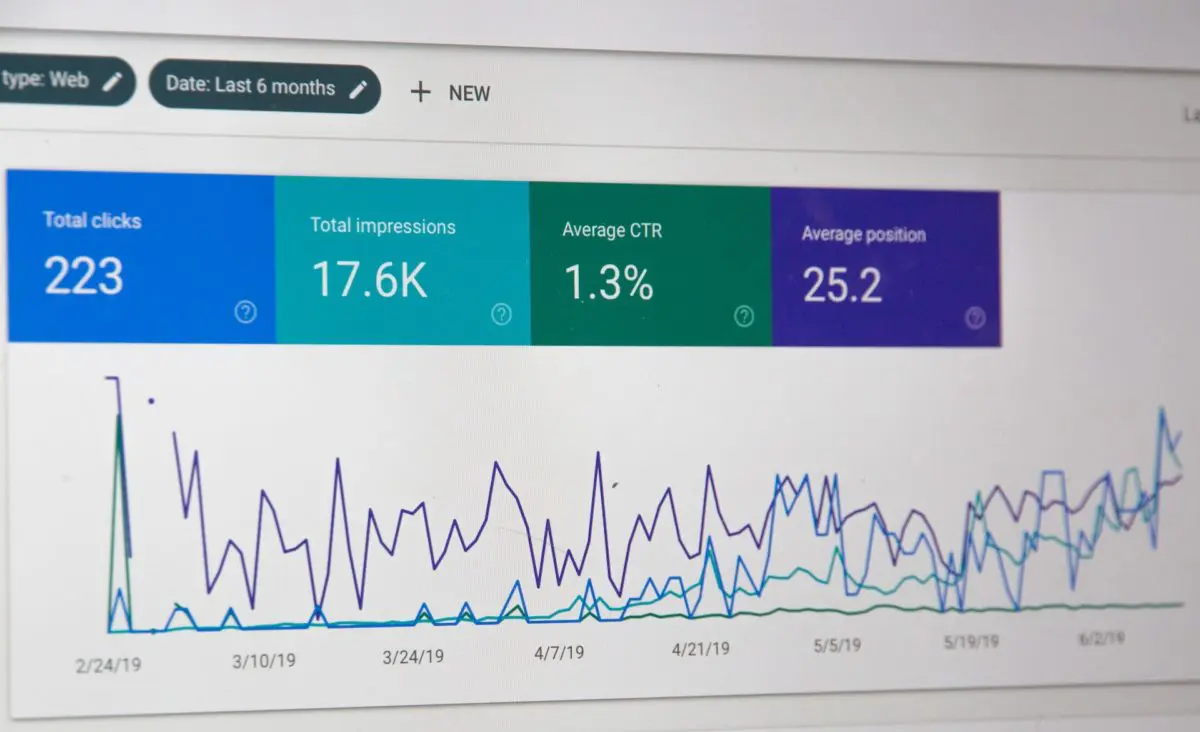Have you ever wondered how brands like Apple, Starbucks, and Netflix manage to achieve worldwide recognition and success? The secret lies in their global strategy.
The competition around companies from various sectors is constantly growing, and it is becoming even more difficult to catch consumers’ attention. That is why effective brand management strategies are essential. A unique brand identity and a solid branding strategy focused on values is now a must-have to stand out from the competition and attract the audience.
Building a brand and developing a proper brand management process is fundamental to the company’s success. Here is a guide to help you understand and create the right strategic brand management process.
What is brand management?
A brand management system incorporates a variety of techniques used to enhance the image of brand values or products in customers’ perception.
The right brand strategy allows you to maintain the proper relationship with the audience, making the brand important to consumers. Thanks to strategic brand management, you have the opportunity to be several steps ahead of the competition, and at the same time build a positive brand image.
The brand management process focuses both on relevant visual elements, such as logos, product design, or pricing, as well as customer relationships and their emotions related to the brand. Improving these components increases clients’ satisfaction, and thus, the chance that they will buy the company’s products again.
To enhance the management process, you may want to collaborate with specialists, such as brand managers, or use brand management software.
Why brand management is important – the benefits of the process
The right brand management strategy brings many significant benefits for the brand. The greatest advantages of this process are as follows:
Improved customer loyalty
There is one rule: high customer trust in your brand value equals to increased loyalty. As a result, your clients would not only buy your products or services, but also willingly recommend them to others and share information about your brand.
The database of loyal customers allows you to locate those who are the most valuable, and at the same time, gain knowledge on advertising campaigns dedicated to this group. Your business growth is not only about attracting new clients, but also encouraging the regular ones to come back.

Increased employee involvement
Employees show greater commitment when they cooperate with companies that have a strong and valuable image.
As a result, they are more willing to be brand ambassadors, increasing brand awareness and spreading positive associations among other consumers. This is a significant element of the internal branding process that helps improve brand performance and loyalty.
Better visibility on the market
If you create a strong brand image, customers will be more likely to choose products or services provided by you, rather than the competition.
The time and commitment you put into creating relationships with customers can also set you apart from the competition, as consumers are more often attracted by the emotions associated with the company, i.e., authenticity as well as experience, and not just the products or services alone.
The most important aspects of brand management
You need to maintain your brand reputation on an ongoing basis because of the dynamic nature of the market that requires companies to constantly evolve.
Only effective brand management will allow you to maintain the brand’s importance and awareness on the market as well as achieve high revenues.
These are the most important aspects of a successful brand management strategy:
Creating a positive brand experience
Brand experience encompasses everything that is related to the brand’s interaction with customers. It is worth noting that clients make their purchasing decisions based not only on the quality of products or services, but also on their brand experience. Therefore, focusing on this area of branding is the key for success – all brand managers will tell you that.
Nowadays, we can observe that more and more companies are being founded which makes purchasing decisions for customers even more difficult. Therefore, they look for as many sources of information on brands as they can. As a result, they not only take customer feedback into account, but also opinions from family and friends. This way they ensure they will make the right choice.
Because of the multitude of possibilities, customers try to base their decision on different factors. That is why they focus not only on the product, but also on the brand or manufacturer. To succeed, remember that the brand should evoke positive emotions in your target audience.
Putting effort to build brand awareness
Brand awareness indicates how well the target audience, but not only, knows the company, its services, and products.
Working on brand recognition and its memorability will result in many benefits, such as successful marketing campaigns, greater customer loyalty and trust, as well as increased revenue.
Creating brand equity
Brand equity refers to the way in which customers appreciate, perceive, and associate a brand. In other words, brand assets that add up to the brand value, and favorable customer experience, which makes clients attracted to your products or services, rather than your competitors.
To build brand equity, it is important to launch the right marketing campaigns that fulfills promises, spread brand awareness, and act as a magnet for loyal customers.
Positive brand equity is of the utmost importance if you want to increase the profits from your investment. The power of the branding process can enable you to earn more while spending less. How? A brand with a better image can offer products at higher prices.
Customers who place their trust in the so-called perceived value of the brand and product quality are more likely to pay more, and this affects brand performance.
Sharing values with clients
Consumers are more interested in the products of a brand that reflects their values.
Shared values help build relationships with new and existing customers. As a result, they lead to increased profit opportunities.
That is why it is worth taking care of the entire customer journey – from gaining information about the brand, through buying, to helping retain customers after the purchase.

Creating a plan to build customer loyalty and brand loyalty
Customer loyalty to a brand is shown through the regularity of customer interactions with the brand and the number of their purchases of its products. To achieve this, it is extremely important to increase customer satisfaction and build relationships with them.
This guarantees that clients will come back. It is also worth noting that loyal customers become brand ambassadors who spread the word and share information related to your brand.
Vouchers, discounts, or loyalty cards are examples of actions that you may take to increase loyalty. Customers greatly appreciate these types of “surprises”, especially when they are addressed to regular customers, or to completely new customers. As a result, you will create a loyal customer base.
Building brand recognition
Brand awareness is reflected by the ability of customers who can identify a brand based on its name or other associations. It is primarily shaped by visual elements that show brand values and personality.
Effortless brand recognition helps the brand to attract and retain the customers’ attention. This is where the customer journey towards purchase begins.
Shaping good brand reputation
Brand reputation is the way in which people perceive the brand’s value and quality. Brand reputation is affected by both internal and external factors.
The internal ones include product quality or customer service, while the external ones are connected to customer feedback or social media mentions.
Businesses may experience a reputation crisis from time to time. This is often the result of negative publicity or negative reviews. Proper brand reputation management will allow you to take control of any unforeseen situation.
It is crucial to listen to current customers and be prepared for any problems they might face. This will increase customer satisfaction and trust for the brand, as it proves that you care about their doubts.
Phases of a brand strategy
The brand management process is designed to help you get an all-encompassing view of your brand, understand the concept of brand management, and support you on your brand journey from start to success.
The strategic brand management process consists of 4 phases that require various activities performed step by step. Here is the list of what you need to take care of as a part of the above-mentioned strategic brand management.
Phase 1 – the brand audit
In this phase, you need to conduct an audit that will allow you to understand your brand identity, its goals as well as the current and future position on the market. It is important to do both an internal and external audit.
Internal audit is about verifying products, services, business plans, or marketing activities. The external one focuses on researching the target market and the perception of the brand by the target audience. It also includes competition analysis.
This phase allows you to define your brand’s vision and a series of future actions, as well as evaluate your business plan, marketing strategy, customer brand perception and perspective on competitor activities. The information obtained during the audit becomes the basis for building a brand strategy and helps to create a brand that will be successful.

Phase 2 – the brand positioning analysis
Brand positioning is the skillful placement of a brand among customers.
Assessing a brand’s current market position is an effective way to help define the direction of the brand strategy development process and action planning.
After collecting all the information in the first phase, it is necessary to analyze it to assess customer interaction with the brand and compare it to the competition.
Data and conclusions gathered in the first phase also enables companies to determine the foundations of the brand as well as its distinguishing features and unique elements. Identifying a unique selling proposition is crucial for a company to develop a sustainable competitive advantage. Brand positioning is the driving force behind a brand strategy and marketing strategies that helps build brand identity and brand’s reputation.
Phase 3 – the visual image and attributes of the brand
Brand attributes are the features that best describe its character, just as if the brand were a person. The attributes should define how you want your company’s brand to be perceived by your target audience and how you want them to feel about the brand. This process starts building brand personality (find out more about archetypes in branding from our article).
In turn, the brand’s visual image aims at attracting attention and building a recognizable brand. It is concerned mostly with the logo design, which should reflect the brand’s essence and all the elements that were established during positioning and creation of attributes.
The logo should be as simple and easy to remember as possible, and its visual features should be consistent. An integral part of the logo is the slogan that says who you are and what you represent.
When the logo is ready, you can start creating more visual materials which need to be consistent with the brand image to support your marketing efforts, such as leaflets, vouchers, or social media templates.
Phase 4 – brand management results
Before you make any specific marketing efforts, you need to set KPIs and goals to help verify the effectiveness of your actions. KPIs should match your business plan, sales, or marketing strategy. You can track brand performance in a variety of ways.
For example, the effects of online activities conducted on the website or in social media can be monitored through analytical tools, such as Google Analytics.
It may be a bit more complicated to measure customer engagement through their experiences and associations, but it is worth looking for solutions supporting such an analysis. As a result, you will be able to understand how the brand is perceived by clients. To verify this, you should take a closer look at the points of contact between the brand and the customer.
10 steps to effective brand management
Effective brand management requires the implementation of many activities that will allow you to create a successful brand. Here is what you should do in 10 simple steps.
Step 1: Gather information about the brand
At the beginning, you need to establish your brand vision based on its history. You should tell the story how it was created and developed, focusing on its journey from the past until now. Ask yourself what your business is, what you offer people, and how you want to achieve your goals. Then, if you operate in a niche market, you should gather information about it. This will help you conduct a detailed competition analysis.
Next, you must collect information on all points of contact between customers and your brand. You need to know how customers interact with your brand before, during, and after they make a purchase.
Finally, it also pays off to check on the company culture, i.e., the practices and beliefs that are reflected in its values. They are an inseparable element of the brand’s voice on the market and among customers. You should also take supporting companies into account when gathering information.
Step 2: Define your business strategy
Start by analyzing your business plan – understanding it is crucial for proper brand management. The brand strategy must be aligned with the business strategy, as it increases the probability that the brand will be successful and ready for any scenarios.
It is also essential to understand the differences between sales, marketing, and the branding process.
Strategic branding should be the base of any marketing campaign, as it allows you to define a brand strategy.
The brand is also defined by customers, so you need to know who they are and what needs they have. It is important to remember that their demands change and you need to monitor the trends.
Your brand should be updated all the time so that customers have only positive brand experience.
When you define a brand, you cannot forget about the competition analysis. You need to know everything about their history, activities, and factors of their success. You will create the perfect brand strategy based on this information.

Step 3: Analyze key metrics
Effective brand management involves past and present brand performance comparison. You can do it by analyzing the right KPIs.
1) The indicator related to brand recognition focuses on its memorability and visibility. This can be done using the number of searches based on brand names, brand traffic on the website, brand presence in social media, or organic reach. Organic reach is the number of people who have come across your company on the Internet, not through paid campaigns.
2) Another important indicator is connected to brand awareness, that is customers’ understanding and knowledge of the brand. In other words, it monitors what clients think the brand represents and what its core values are. The greater the brand awareness and recognition, the stronger the brand.
3) It is also worth taking a look at the process of making purchase decisions by customers. What makes them want to buy the product or what stops them from doing it? This will help you determine how you can influence their choices.
Step 4: Define the values, pillars, and characteristics of the brand
Brand’s values are the basis of its culture, products, and communication. They must be established in order to build a business, a brand’s vision, products, or services.
Values express what the brand represents and act as the driving force behind business or decisions. The basis of a good brand strategy are its pillars, which should remain unchanged. Their main goals are to complement the brand image, indicate its goals, and make it stand out and attract the target audience.
Branding is becoming more and more competitive, and being better than other brands is no longer a sustainable advantage. Because of this, you need to identify brand differentiators, i.e., unique features and benefits that will allow you to achieve and maintain the superiority among the competition.
Keep in mind that brand management strategies need to be aligned with the overarching corporate branding strategy. The brand management efforts should reflect and reinforce the core values, mission, and positioning established by the corporate branding strategy.
Step 5: Get ready to carry out your plan
Brand management activities need to be carefully prepared and this process requires creating brand attributes. Those are adjectives that illustrate the brand essence.
The next step is to define the brand essence. Think of a few words to use in the brand’s slogan or any other element that will make the brand more important and allow it to stand out from the competition.
After that, you should focus on creating brand personality, i.e., giving it some human characteristics. Customers need to know that there is a person behind the brand. This is a key aspect of effective brand management because it brings the brand to life and creates particularly important relationships as well as connections. Running a company is not only about the transactions.
You need to remember to plan your content. It will help you make better decisions. The content strategy should have goals that are aligned with the brand’s target audience, customer journey, or messages.

Step 6: Start creating
Once you are properly prepared, you can take care of all the essential elements of brand management. Of course, at the beginning, you should choose the brand name. It is not an easy task and can be done only if you already know the history of the brand, its values, features, and pillars.
The name should be unique, timeless as well as easy to remember and pronounce, as it must attract people. The right name also makes it easier to create slogans and taglines.
Then create a clear message of your brand, i.e., a value proposition that you will use in your messages, both internal and external. This makes people relate to the brand because it inspires, attracts, motivates, convinces, and even encourages them to stay as not only customers, but also ambassadors.
You also need to develop a brand’s voice, which is the way you speak to your audience. The brand’s personality and voice creates the brand’s written style. Keep in mind that once you have created your name and other elements, it is time to protect them as trademarks. This should be handled early in the branding process.
Step 7: Design the visuals
The logo is a fundamental element of brand identity and must stay true to brand values and new ideas. It has to be simple, unique, and recognizable. For brand positioning, the slogan should be catchy and meaningful. Over time, it should become synonymous with the brand.
In addition to the logo and slogan, you also need to develop the graphic style of the brand. Those visual elements should be created together because everything must be consistent.
A graphic style includes elements such as typography, graphics, images, photos, illustrations, or icons that, when combined, represent the brand personality, its essence and values.
When creating visuals, you also need to specify a color palette that aligns with the brand. Colors are supposed to evoke specific emotions and customer reactions. They also enhance both brand values and personality.
Step 8: Create a marketing strategy
Now you are ready to move on to creating an effective marketing strategy. It includes marketing campaigns, slogans, and activities carried out through various promotional channels. Those actions are intended to increase customers’ brand awareness through advertisements, press releases, websites, and sales.
A marketing campaign is a planned, strategic activity aimed at promoting a specific goal, such as raising awareness of a new product among potential customers or gathering customer feedback.
It is usually aimed at reaching consumers through a variety of channels, including email, advertisements, and social media clicks. Slogans provide the campaigns with the main message. In order to be effective, it is assumed that campaigns should last about six weeks, but not longer than eight.
The combination of communication channels creates the so-called media mix. Due to the increasing variety of touchpoints and the complex paths customers take, the choice of the medium and the timing of promotions must be under greater scrutiny.
Nowadays, one cannot forget about mobile applications, which are an increasingly effective way to engage consumers. They are the most personalized and frequently used marketing channels. That is why they must be included in a brand’s marketing strategy.

Step 9: Present your brand wherever possible
You can present yourself and your brand to potential customers in a variety of ways, from advertisements, through a website or an email, to social media. Advertising not only serves to introduce the brand, products, and their benefits, but also incorporates brand personality and essence to build a relationship with the target audience.
Advertisements aimed at a direct response are used to evoke a specific emotion and action in customers. It is a powerful and cost-effective tool for building a successful brand.
A website, be it a business or e-commerce one, is very important for every brand. It helps to not only build brand recognition but also engage and show all its values and personality to the potential customers.
Therefore, the website must include all the necessary elements to ensure a unique user experience, i.e., calls to action, an intuitive user interface, engaging messages, and refined SEO.
Email marketing is a great way to build brand awareness. It is a direct interaction with recipients who receive ads and the most important information on an ongoing basis with an incentive to take action.
Nowadays, every brand should also mark its digital presence in social media. High-quality content, images, and information are the best way to get your message across and keep in touch with your target audience, and above all, encourage customers to buy your products.
Step 10: Analyze the effects of your actions on an ongoing basis
You must constantly monitor the effectiveness of your activities to check if everything is working as it should and to identify areas that need to be improved or changed. Analyze statistics collected using various tools, such as Google Analytics, Google Ads, or Google Trends. Test the website, social media, subscriptions, databases, or sales in terms of user experience.
Focus on indicators such as CPA (Cost Per Acquisition), LTV (Lifetime Value), CTR (Click-Through Rate), or CPC (Cost Per Click on an ad on social media or Google).
You also need to analyze conversion rates, costs, and customer behavior to evaluate your sales funnel.
What is more, it is important to measure brand loyalty because it helps to determine the likelihood that customers will continue to buy products.
Is strategic brand management important? Definitely! And it does not matter whether your brand is new or you are implementing another promotional campaign. Analyze brand assets because analysis is the base for effective digital asset management.

Strategic brand management – summary
An analysis of examples of strategic brand management is very useful when creating your own brand strategy, as you can draw inspiration from the trends and various ideas.
Keep an eye on different companies, especially your competitors. You can also find interesting examples of the brand strategy in the Nopio blog article here or read through our examples of brand consistency.
Strategic brand management requires a lot of time and work, as well as a lot of knowledge. You do not have to do it all by yourself.
At Nopio, we offer brand management consultations. With advice from our brand managers, creating an effective brand management strategy will become much easier!






